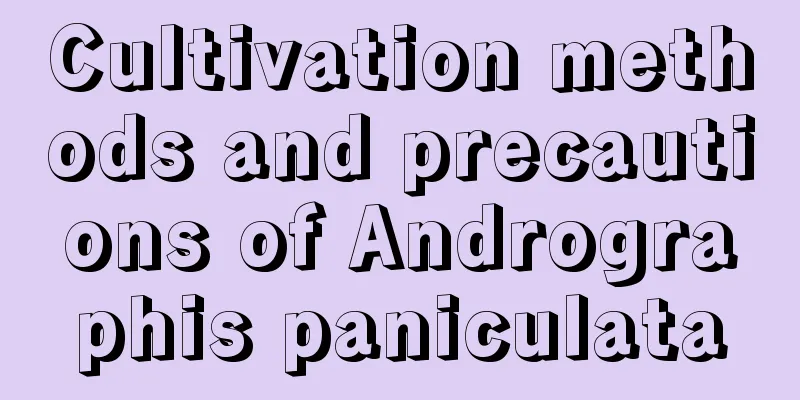Cultivation methods and precautions of Andrographis paniculata

1. Maintenance methods1. Temperature: It is best to keep it in a higher temperature environment, specifically between 25 and 30 degrees. If the temperature is between 15 and 20 degrees, its growth will slow down. In winter, its temperature requirements are still quite strict. Below an octave, its growth stops. If the temperature drops below zero, the entire plant will wither. 2. Light: Andrographis paniculata likes light and has very high requirements for sunlight, especially when it blooms, it must rely on the help of light. Therefore, it is appropriate to keep it under mild light. However, it is also necessary to block the strong light from time to time. 3. Watering: Andrographis paniculata does not like moisture, but when it is growing fast and blooming, the substrate should not be too dry. Just make sure there is no water accumulation and that rainwater is drained out in time. 4. Fertilization: Andrographis paniculata is a variety that likes fertilizer. Not only should there be enough fertilizer in the substrate, but it is also necessary to fertilize once every two weeks or so. Liquid fertilizer works well. 2. Breeding techniques1. Reproduction: Seed propagation can be used, generally the "direct seeding" method is used. In September or October, the fruits need to be collected and the seeds taken out. Before sowing, soak the seeds in warm water to accelerate germination. The specific time for sowing can be in March or April. After sowing, keep the humidity between 70 and 80 percent and place in a cool location. 2. Pruning: Especially its branches and leaves, which need regular repair. Generally speaking, the main task in spring is topping and promote branching. Furthermore, dry, diseased, or insect-infested plants need to be cut off in time to avoid infecting other parts. 3. Problem diagnosis and treatment1. Disease: A common disease is "damping-off disease". In addition to using drugs such as carbendazim, you also need to water less and reduce soil moisture. Then there is the common "cataplexy", so you need to pay attention to ventilation and control the temperature. 2. Pests: There are "cotton bollworm", "mole cricket" and so on, which can be sprayed with insecticide. IV. Other issues1. Toxicity: In fact, it contains a harmful ingredient. However, its toxicity is relatively low and it will not cause any harm if not accidentally ingested. 2. Can it be kept at home? Yes, as long as you pay a little attention to its toxicity. |
<<: Cultivation methods and precautions of peony
>>: Ginseng cultivation methods and precautions
Recommend
What flowers are there in autumn
1. Colchicum It is a perennial bulbous flower tha...
How to plant strawberry seedlings?
Strawberry is a berry with high economic value an...
How to change the soil of Amaryllis and what is the time and method of changing the soil
When to change the soil for Amaryllis It is gener...
What to do if the leaves of the plant become soft?
1. Reason 1. Insufficient brightness If the leave...
Characteristics of Carnation
1. Appearance characteristics 1. The carnation pl...
How to prune the smooth sailing flower and when to prune it (with pictures)
Time to prune the smooth sailing flower Spathiphy...
What to do if the fortune tree loses its leaves
1. Excessive flooding or drought If the soil in t...
How to cultivate osmanthus fragrans
1. Watering When watering the sweet olive, be mod...
Can I grow red maple trees at home?
Can I grow red maple trees at home? You can plant...
The Flower Language of Lupine
Flower Language Mother's love, happiness, gre...
How to propagate honeysuckle with high survival rate by cuttings? Propagation technology of honeysuckle branches by cuttings
Honeysuckle has a high survival rate of cuttings....
How to use rooting powder for lucky bamboo
1. Usage time The function of rooting powder is t...
What are the common diseases and pests of balcony vegetables?
powdery mildew It is a common disease of vegetabl...
Bougainvillea pruning
1. Pruning method 1. Shortening method: This meth...
Cultivation methods and precautions of horsetail iron (how to keep it alive at home)
The horsetail iron plant is mainly distributed in...









